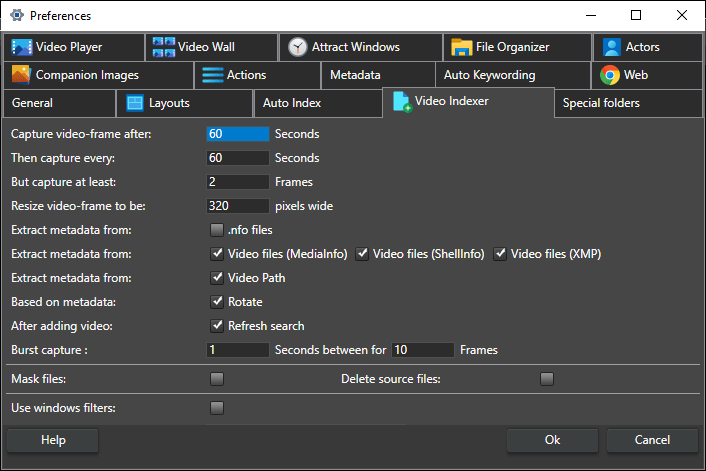Introduction
In Fast video cataloger 8, we have made a significant improvement to what was probably the best video indexing engine available. In the previous post I gave a high-level overview of the improvements, this text will just go into some more details about the changes we have made in version 8 and why they are good.
A quick summary is that indexing is more stable than before while still being just as fast. If you just want great software to organize all your videos in one single place you can download Fast video cataloger from https://videocataloger.com
The video indexing process
Our definition of video indexing is processing a video to get metadata from the video and adding it to the video catalog. Here is how it works, step by step:
- The user adds videos or folders with videos to the list of videos to be indexed.
- Users add known metadata that is known for all the videos in the list
- User clicks start, and all videos are put in the index queue together with their shared metadata.
- The index queue is processed video by video, failed videos are put in a failed list.
- The video is opened and scanned from beginning to end. In this phase, Fast video cataloger extracts thumbnails as defined in preferences.
- Metadata is optionally extracted from the video file using media info
- Metadata is optionally extracted from the video file using the Windows shell
- XMP Metadata is optionally extracted from the video file
- Metadata is optionally extracted from .nfo files.
- Companion images are scanned for as defined in preferences
- Video is added to the catalog with its metadata. And we repeat step 4 until all videos are processed.
How thumbnails are extracted
A separate process for stability
Fast video cataloger uses directshow to extract videos. Each video will require different types of filters and different types of codecs. Like all software, there will be bugs. To make sure a bug in any of the software used to extract frames from one video is affecting the following one each video is run in a new clean process and at the end of the frame extraction that process is closed down.
Directshow Filter graph
When the indexing starts a new directshow filter graph is built. The filter graph includes our custom filters to extract images instead of rendering the video to the screen.
Directshow has support to automatically use the codecs installed on your system. This is both good and bad. It is good because new video formats can be added to a system without us having to even be aware of it. Video vendors can simply provide new filters and they will work in all software supporting directshow. It is bad because installed software we are not even aware of can introduce issues with indexing. There is also the uncertainty of what software to use when more than one filter is installed that handles the same format. Fast video cataloger can use the default way to build filter graphics ( in preferences, on the index tab, use directshow ) but by default, we build our own filter graphs. Because of this, the frame extraction works on your computer even if you have misconfigured or competing directshow filters installed.
If you do want to index videos that are not supported by the built-in filters make sure to change the setting and make sure you have installed 64-bit filters.
Hooking into the indexing process
Fast video cataloger has a scripting interface. New in version 8 is the ability to hook into the indexing process. Using the scripting API you can easily set up a callback to be called at the end of the indexing process or as part of the process for each thumbnail being extracted.
Machine learning and object detection
The callback to process the thumbnails allows you to do things like machine learning to process all the frames as the video is being indexed, and perhaps add extra metadata or even alter the thumbnails for the video.
Custom scrapers
The callback at the end of the indexing process allows you to add your own custom scrapers or crawlers to add more metadata for the video.
Conclusion
The new indexing process in Fast video cataloger is Fast, stable, and extensible. You can quality index large lists of videos and leave the program to do the work without supervision. The indexing process can also be extended to suit your specific needs. Download fast video cataloger from https://videocataloger.com/

